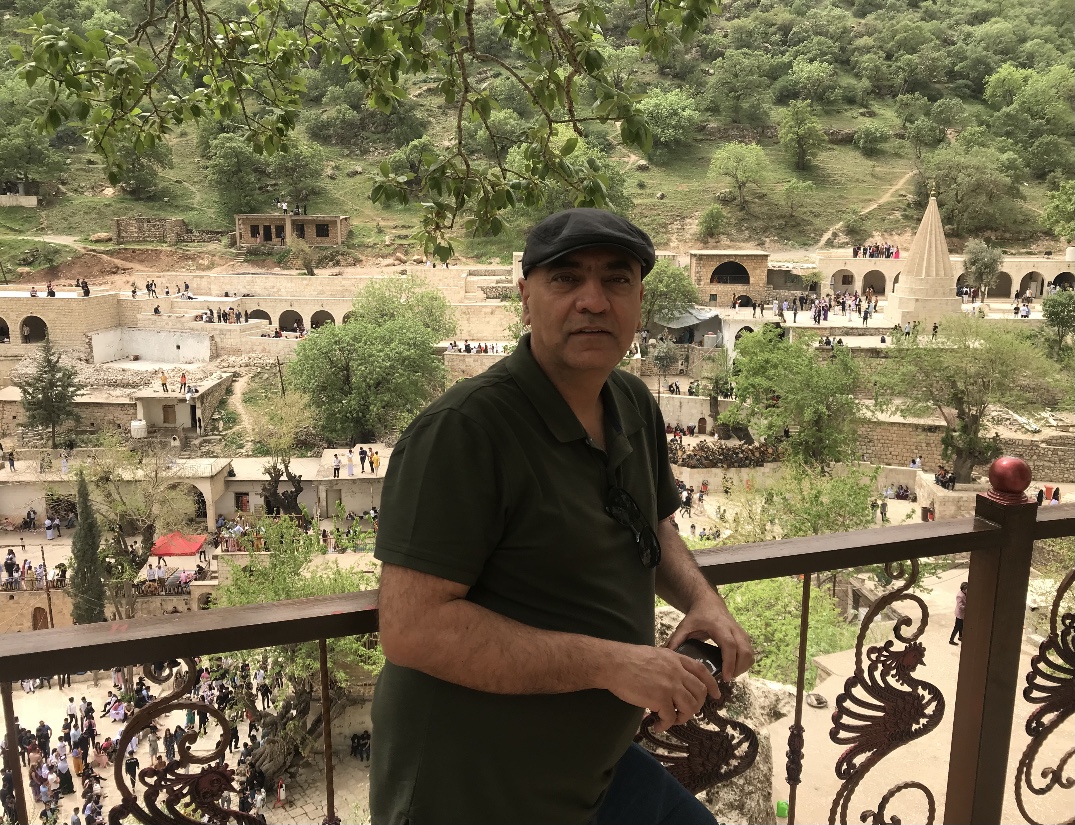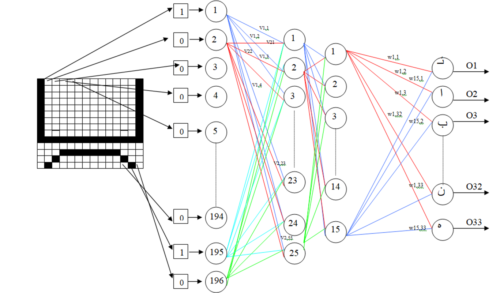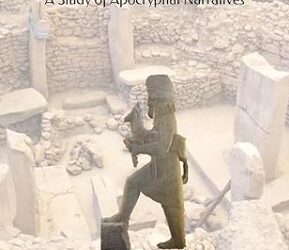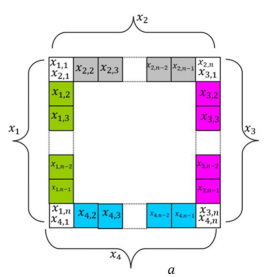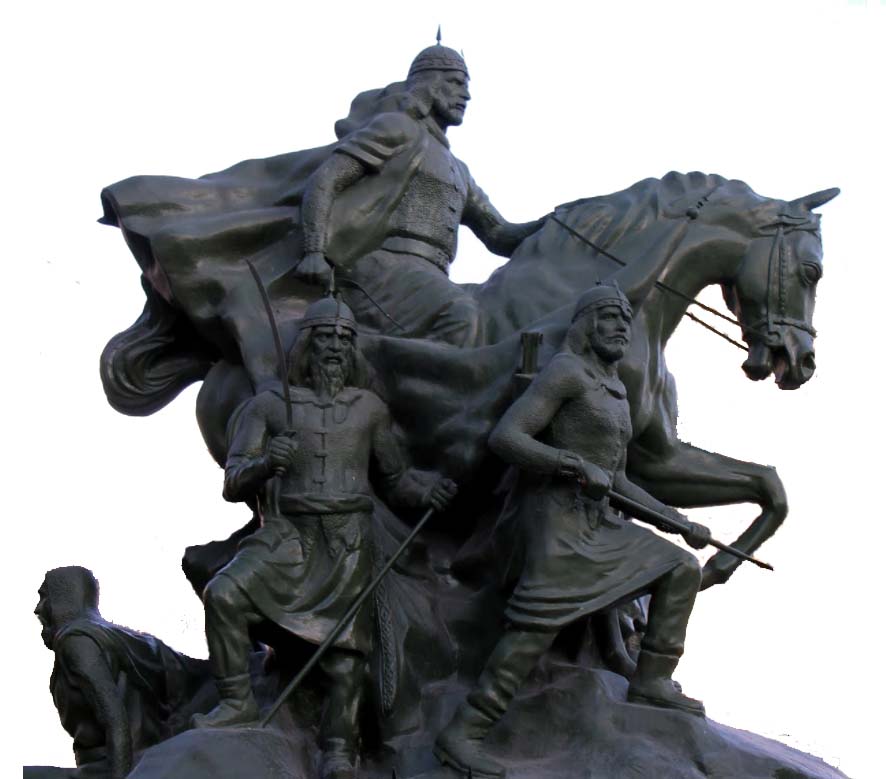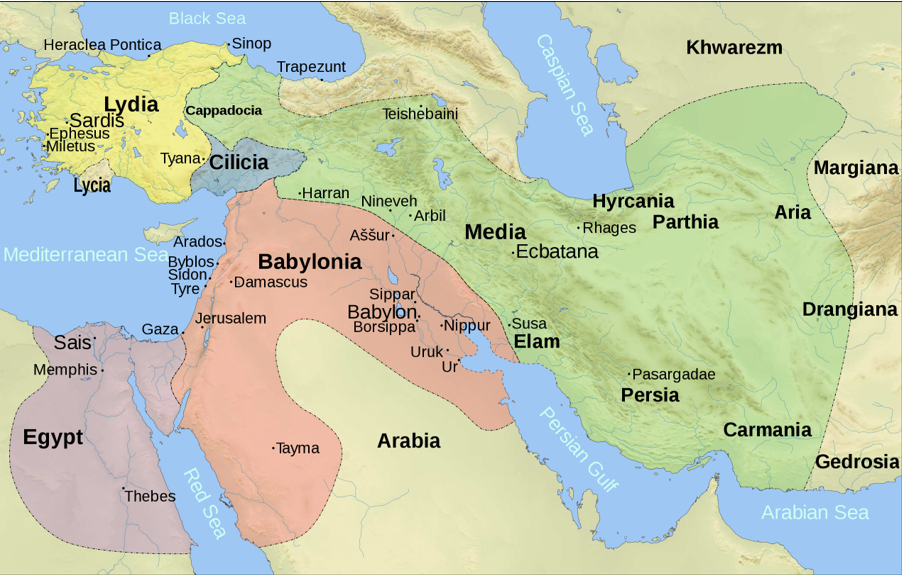Introduction
This essay looks at Saladin’s achievements for himself and for his people throughout his life according to different sources. Two contemporary sources will be looked at: one written by a Crusades historian, and one written by a Muslim historian. In general, these sources can be divided into two categories: Muslim and non-Muslim. A large number of books have been written, however, that describe the achievements of Saladin.
The goal of this essay is to evaluate the neutrality of the sources regarding the faiths of the authors as we may see different views across the two categories. For instance, Ibn Athir, who was alive during the time of Saladin, was biased against him even though he was also a Muslim. In contrast, in relation to non-Muslims sources, especially the Western historians, there are two different versions of Saladin that can be seen. Therefore, it would be hard for the writers to compare all of the different sources, especially regarding a man like Saladin whose enemies were both non-Muslims and Muslims[1]. A logical analysis is the only way to identify the true historical facts, and it is very important to approach this sensitive historical issue with thoroughness, care, determination, and truth.
This essay will consist of several different sections, and will provide a brief biography of Saladin, making use of different perspectives from different sources, and then how Saladin became a Sultan will also be discussed. The tremendous potential of Saladin was beyond measure as in a short time, he expanded his rule from Egypt to Levant and Yaman.
Saladin is a universal figure who appeared in the High Middle Ages. He was a politician who was known to behave with honour, and who showed a high level of morality towards both his own people and his enemies.
The Name of Saladin
Saladin is an epithet of Yusuf son Najm al-Din Ayyub son Shadi; Saladin’s name is derived from the Arabic compound name, Salah Ed-Din. Salah means reform, good faith, and righteousness; and din[2] means religion. This means that the title of Saladin or Salah Ed-Din means the reformist of religion, interpreted by some as ‘Honouring of Religion’[9, p.97]. Baha’din Ibn Shadad described him as a ‘Salahu: din and dunia’, which means reformist of the faith and the world.[4. p.2]
Place and date of birth:
Saladin was born in Tikrit, which is a city in Iraq. His year of birth became certain for some historians as they proclaimed that the day of his birth was when his family left the city for Mosul. It is suggested that the reason for this migration was because Ayyub, father of Saladin, was in charge of Tikrit, and then one day, while him and his brother, Sherko, were in the market of the city, a woman ran up to them and asked them to save her from a man who wanted to assault her. Sherko, without any hesitation, killed this man, who was a loyal friend of Sultan Saljuqi. Saladin’s father sent a letter to the Sultan that said, “My brother has killed one of your loyal friends and I imprisoned Sherko, I am looking to hear from you what shall I do?” The Sultan replied to him and said, “The person who was killed was a very close friend of mine, and the person who killed him was your brother. It is very wise to leave the city with your family, I am afraid if one day I see your brother, Sherko, and my heart is still in hatred, then I will draw my sword.” Najmadin realised that he could not live in the city anymore, so he and his family left the city for Mosul, which was under the rule of Imadadin Zangi. This day was in 532 A.H.[10, p.87-7, 7, 2, 23] According to Anna,[2, p.23] “Saladin was born in between September 19, 1137 and September 7, 1138 C.E.”
Saladin’s descendants:
Saladin’s grandfather, Shadi, came from the Rawandi clan of the Hazabani tribe. The Hazabani was a large Kurdish tribe who were located from Irbil to Azerbaijan. Shadi was born in Dwin village and he was head of the clan. The historians believe that Dwin is located between Azerbaijan and Armenia. At present, this village is no longer inhabited and its location is unknown. Shadi went to Tikrit to be under the command of one of the rulers in the era of Sultan Mas’udi Saljuq. When Shadi died, his son, Najm al-Din Ayyub, became the head of Tikrit.
A few modern Kurdish historians, however, believe that the village Dwin is located in the Irbil province, North Iraq (south of Great Kurdistan)[3]. This idea is based only on a hypothesis, and they have only one clue that there is a village called Dwin in the Irbil province. I personally traced this information and I found the following additional information:
Firstly, I have interviewed the illiterate people who live in Dwin (in Iraq), and they believe that the ancestor of Saladin, Shadi, was born in their village. It should be noted that if these people are illiterate, they cannot be influenced by the books of modern historians. The people in Dwin said that this knowledge has been passed down through generations to them. They also believe that the Hazabani tribe ruled in this area for a long time, and that the base of the Hazabani was in Rawandz.
Secondly, something that most historians are not aware of or have never noticed, is that in the Kurdish culture, one name is used for two different places. For example, there are two cities named Choman: one located close to the Soran province in Iraq, and the other one located in Iran. There are numerous names that are repeated for two different places, and even sometimes for three different places.
Thirdly, if we believe that Saladin was from Dwin in Azerbaijan, then we need a reliable answer to the question: When Saladin and his family left Tikrit and went to Mosul alone, and then to Syria, how could he form an army made up of Kurdish soldiers? According to Raymond,[1, p.82, 84] when Saladin took over Egypt, a quarter of his troop were Kurds, but if he was from Dwin (in Erbil), it would be easier for him to form an army from his tribe as it is clear that the two cities of Irbil and Mosul are not far from each other (51 miles).
Fourthly, there are some signs on the graveyard in Dwin (in Iraq) that are similar to the signs on Saladin’s tomb. For example, the star with eight heads is used on Saladin’s shrine, and this is also found in Dwin. We shall explain this in more detail later on in this essay.
Fifth, as the historians have all agreed that Saladin came from the Rawandi clan, we can convincingly argue that Dwin is located in the Irbil province as there is a town near Dwin with the name Rawandz. The names Rawandi and Rawandz are very similar.
The Faith of Saladin
Saladin was a Muslim of the Sahafi’i doctrine, but some sources state that he was of the Ash’ri faith. He built Khanaqa [10, p.109][4] for 300 Sufis, and located them close to his home.[1, p.94] During the last decade, the followers of the Zoroastrian faith stated that Saladin was of this faith[5] rather than the Islamic faith. I personally traced this back, and I only found the star with eight heads on the Saladin shrine and on his hamlet. This star was also used as some kind of symbol by Zoroastrian and Mithraism followers. This sign was also used by Naqshbandi Sufi, however, and this branch of Sufism was found by Baha-ud-Din Nashbandi Bukhari, who was born in 1318. Here, we see that the Sufi is a common link between Naqshbandi and Saladin, but Naqshbandi was found many years after Saladin’s death. I believe, regarding the faith of Saladin that further academic research needs to be undertaken.
The Condition of Egypt, Levant, and Yaman Prior to Saladin
In order to assess the accounts of Saladin’s achievements in Egypt, Levant, and Yaman when he defeated the crusaders, we have to first focus on the condition of these three places during the Crusades.
The Fatimid Dynasty
After overthrowing the state of Aghlabid (800-909 AC)[6] due to internal conflict, the dynasty of the Fatimids arose. The Fatimid Caliphate was based on the Shi’a doctrine, Ismaili branch, and it was founded by Ubayd Allah al-Mahdi Billah, who claimed that he was a descendent of Prophet Mohammed through Fatimah, daughter of Prophet, and Ali bin Abi Talib, cousin of Prophet. According to Ibn al-Haytham, behind the collapsing of the Aghlabid state was Kutama, who was a leader of Berber. Kutama was under the influence of his Imam, Abu ‘Abdullah, who was a missionary for the faith of Ismaili Shi’a.[5, p.1]
According to Raymond, the Fatimid’s history started as a movement of Ismaili in the town of Salmiya in Syria, and Ubayd Allah al-Mahdi led that movement. He was recognised as the Imam.[1, p34] The Fatimid dynasty spanned its border from the east to the west of North Africa and part of Levant. At the beginning, they controlled the Aghlabid territory, which is now known as Tunisia, Algeria, and some parts of Libya and Sicily.[5, p.2] It is believed that later on they needed a more strategic location for their capital city, and Egypt became their target. They conquered Egypt and built a new city, Cairo, as their capital. Hence, Egypt became the centre of the Fatimid Empire.
The Fatimid dynasty contributed to the advancement of civilisation as they established many institutes and libraries for education. Two particularly remarkable institutes were established: Al-Azhar, Darul Hikma (Hall of Wisdom) and Dar al-Ilm (Hall of Knowledge).[1, p.44, 55] In addition to teaching the faith of Ismaili, other subjects were studied in these institutes, such as geography, mathematics, logic, law, physics, astronomy, and theology. People came from the Sunni lands to Cairo to study, and some of them converted to the Ismaili orthodoxy, such as Hassan Sabah and Nasir-i-Khusraw, who were a Persian poet and a philosopher, respectively. They returned to Iran and Central Asia to preach their faith, and a large number of scientists left for Egypt, such as Ibn Haytham, a mathematician and physician, Ibn Butlan, a Christian physician, and Ibn Maymun. Egypt also became the centre of a trade network that crossed the Mediterranean and the Indian Ocean.[1, p.46]
Levant
The condition of Levant was unstable for centuries due to internal and external conflicts. It was under heavy attack, and was home to two different Muslin orthodoxies: the Sunni and the Shi’a. Each of these wanted to control Levant, leading to civil unrest. On top of this, the Crusades expanded and Levant became their target.
In general, there are three different views of these conflicts. The first view is the Muslim point of view “that the Franks started to invade the territories of Islam, they started to take Toledo and then to other parts of Spain, later they occupied Sicily, which was under the Muslims. Then they paid attention to invade the North Africa and Levant, in 1097 the Frank attacked Syria.”[3, p.3] Whereas, according to the second view, Western historians believe that the Crusades started as a retaliation to the invasion of the Islam army, whose remit extended to European countries as they invaded Spain and then Sicily during the Aghlabid era.
The third view stems from the fact that Levant has a geographical structure that is connected to Mesopotamia and North Africa. Thus, Fatimid’s dynasty, the orthodox Shi’a, attempted to invade Levant to stop the orthodox Sunni as they were of the Saljuqids dynasty. The Saljuqids attempted to extend their power from Levant to Egypt to collapse the Fatimid dynasty. Therefore, there was tension between these two orthodoxies, which made Levant unstable. As a result, the Fatimids invited the Franks to invade Levant to stop the Saljuqi invasion,[3, p.4] thus making Levant a barrier between them. Arab Historians of the Crusaders, translated from Arabic Francesco Gabrieli, translated from the Italian by E. J. Costello, USA: University of California Press, Berkeley and Los Angeles, 1969.
Yaman
At a certain point in history, the Abbasyid Caliphate lost their control of all the states. In Yaman, the ruler Abdal-Nabi published a heresy by announcing his Father’s tomb as a Holy Shrine. In Islam, visiting Ka’ba in Mecca is one of the five pillars of Islam, and all Muslims who are able-bodied are required to visit once in their lifetime. Abd al-Nabi forced Muslims to visit the shrine of his father rather than a Ka’ba in Mecca. This heresy affected the Muslims’ faith and the Caliph of Abbasyid had no control over him. He also took women as slaves and sold them,[7, p. 65-6] and then Aden was controlled by Ayybian family.[12, p,98]
Saladin’s Achievements
The achievements of Saladin are highlighted in his biography. His bravery and potential appeared early in his life when his uncle, Sherko, was requested by the ruler of Syria, Sultan Nuradin, to lead an army of 8000 men to Egypt to protect the cities from attacks by the Franks. At the time, Egypt was under the threat of the Franks, and Caliph al-‘Adhil asked for assistance from Nuradin to protect him and the city. Sherko was nominated to take this expedition to serve the Caliph and protect the city. Sherko asked his nephew, Saladin, to accompany him on the expedition because he knew that Saladin had great potential and strength on the battlefield. At first, Saladin begged his uncle to exempt him from the expedition as he preferred to serve any commission authorised by Nuradin and to stay in Levant.[11, p.370-1]
One of the great achievements of Saladin was becoming a Sultan. Some sources use the term Malik for Saladin, which means king. To obtain support and to take this position is not easy; especially as in that time there were many conflicts, such as the conflicts with the Crusaders and the conflicts between the Muslims themselves. Saladin had not planned to reach the throne as mentioned above, and he begged his uncle, Sherko, not to take him. His uncle insisted, however, because he knew that Saladin had great potential in the military and in politics. The assessment of Saladin by his uncle came true as he recorded numerous achievements in different fields.
To reach the throne is not easy. Saladin had to have been very wise, just, and truthful in faith, and had to have had good political and military manners. Here, we highlight the military and political achievement of Saladin.
Political and Military Achievements
When Saladin arrived in Egypt, he showed his loyalty to the Caliph under the command of his uncle. The first step in his expedition was to get rid of the opposition of Caliph al-‘Adhil, so-called Shawar, who was a minister in Egypt; Saladin and his group handcuffed him, and, by the order of Caliph, Shawar was killed. In fact, Shawar was not a victim of Sherko’s ambition, he was involved with the Franks in order to yield Egypt to them, and the Caliph al-‘Adhil was powerless; the city was about to fall into the Franks’ hands.
Also, the Fustat city was burnt by Shawar and people migrated to the Cairo city,[12, p.108] that was one of the catastrophic events occurred during his position as a minister of Egypt. However, in a very short time, when Sherko replaced Shawar’s position, he encouraged people to go back to their city as the city of Cairo was overpopulated.[12, p.108]
This step was the first thing that attracted the Caliph’s heart, and it allowed Saladin to take his first step towards the throne. In line with this, his uncle gained supreme authority on 18 January 1169.Unfortunately, his rule was very short as he died due to illness, and on 23 March 1169, his nephew, Saladin, replaced him.[4, p.54-5] Then Caliph al-‘Adhid honoured Saladin with the title ‘Malik Nasir’, meaning ‘The Victorious King’.[11, p.472]
Ibn Shadad stated that, “The Sultan soon had the satisfaction of seeing his government respected, and order established on all sides.”[4, p.55] Therefore, Saladin prepared to attack the Franks’ territories. Meanwhile, the Franks attempted to take Damietta, and Saladin went with his army to protect the city, thus thwarting the Franks.[4, p.58-9] Saladin consequently made a fresh attack upon the territories of the Franks, and heavy conflict took place between them.
The expeditions of Saladin made him famous, and he gained the respect of many Egyptians. By the time of the death of Caliph al-‘Adhil on 13 September 1171, Saladin had reached the throne thanks to his great influence and power among the Egyptian people. It does not appear from history that Saladin had a challenger to the throne, but later on, an ex-officer, El-Kenz’ of Caliph al-‘Adhil escaped to Aswan. He formed an army to attack Egypt and take power from Saladin, but the army was defeated by Saladin in 1174.[4, 65-6]
During the time of Saladin’s rule from 1169 until his death in 1193, Egypt, Levant, and North Mesopotamia were under the threat of the Crusaders. Ibn Shadad, who was in the best position to know about Saladin’s life as he accompanied him for the five years before his death, said that, “I record what I have seen, and I record some events from trusted people, or what Saladin said to me.” Between Saladin’s first expedition to take el-Kerak and esh-Shobek, to the conclusion of a treaty of the peace with King Richard, Ibn Shadad recorded at least 146 battles between Muslims and the Crusaders. Out of these 146 battles, Saladin participated in 74 directly. Part of one battle was in Ramla, where Saladin was defeated by Badwin V – his only defeat. The rest of these battles were undertaken under his command by members of his family or by other Muslim leaders. This means that he was continuously engaged with the military, which could be considered to be one of the greatest achievements of Saladin’s life.
Here, I would like to draw the attention of the readers to the fact that most of the sources mentioning Saladin’s achievements only mention a few of them, whereas if we analyse his biography in depth, many more are highlighted. For instance, the majority of Muslims point out that one of Saladin’s achievements was the liberation of Jerusalem. This focus on Jerusalem has reduced the abilities of Saladin, and this is only focused on because this city is considered to be a Holy city for Islam, Judaism, and Christianity. It is indeed obvious that this city received its own respect; however, the military action when the city was recovered from Franks does not seem so difficult if we compare it to other liberation, although he encountered a severe battlefield.
If we go back to Saladin’s politics, when Nuradin Zangi, the ruler of Syria, died, his young son became his successor, Emir Abu Mugadam was appointed as regent, and Saladin soon went to Damascus. It says that Emir Abdu Mugadam sent a letter to Saladin in secret to invite him to come and take Syria. Soon Saladin ruled Syria and married a widow of Nuradin, thus becoming a sultan of Levant and Egypt.[11, p.470-1] Later, the nephew of Nuradin, Safe Ed-Din, became afraid that Saladin would extend his power and take over the territories of Mosul. Thus, he commanded his brother, Izza Ed-Din, to march to Damascus to take control from Saladin and defeat him, but his army was defeated by Saladin.[4, 70-2] In my view, with this marriage, Saladin controlled Syria and Egypt and unified the army of Muslims.
Meanwhile, TuranSha, Saladin’s brother, had already launched an attack on Yaman to get rid of the ruler who had published a heresy, as mentioned previously. He killed Abd al-Nabi, destroyed the shrine of his father, and melted the gold that covered the shrine.
By occupying Egypt, Levant, Yaman, and many Kurdish cities, such as Amed, ‘Aintab, and Diyarbakir, and by appointing the Kurdish princes to be in charge of various cities, he established a great dynasty of Ayybian under the faith of Islam. Although Saladin appointed Kurdish princes from his family members, the dynasty still involved a mix of different nations. Saladin gained the respect of Muslims, especially Arabs, when he saved the body of Prophet Muhammad, whom the Franks had attempted to dig up from his tomb.
Saladin was wise in political agreements, and never fell in to any traps. When King Richard proposed the marriage of his sister, Jane, to Saladin’s brother, Malik ‘Adil, to settle the conflict between Christians and Muslims, Saladin was suspicious.[9, p.168] He did not fall for this trick as King Richard had stated that Malik ‘Adil had to convert to Christianity for the marriage,[11, p.413-4] but Saladin recognised that if the marriage proceeded he would lose his faith and his people’s trust.
Saladin was also very diplomatic, and somehow had a secret connection with the emperor of Qustantin, Isaac Angelus. Saladin became his ally and received information about the Crusaders in the West through Emperor Isaac. When the armies of King Philip of France, King Richard I of England, and Frederick Barbarossa of Germany were assembled and ready to unite against Saladin and take Jerusalem, Emperor Isaac,[9, p.136] sent a letter to Saladin to prepare him for this attack. It is said that Emperor Isaac received the information from Queen Syllibia, which is likely as Saladin exempted Syllibia from paying tax for her freedom when Jerusalem fell into his hands, despite the fact that even the poor people had to pay the tax for their freedom. Therefore, the question is raised as to why Queen Syllibia did not have to pay her ransom.[11, p.432]
At a matter of fact, Ibn Athir, who was a great historian, highlighted an event that showed Saladin’s political nous. On one occasion, he said that, “When Nuradin prepared the army to come to Egypt to take the power form Saladin, Saladin gathered members of his family to consult them on what to do if they come. His nephew said, we retaliate against them and we fight against them. Ayyub, Saladin’s father, said: My son! Your uncle (paternal uncle) and I love you more than anyone, we are under the command of Nuradin if he orders us to kill you, we obey him, and we are his mamluk (slaves). If you want my advice, send him a letter and say to him, I hear that you move to take the country, this is not needed, just send one of your servants to put a chain around my neck to take me to you, and there is no objection from members of my family.”[6, p.36]
As a result, Saladin sent a letter to Nuradin and the tension settled down. I believe that under no circumstances did Saladin send this letter, and it is doubtful that this situation occurred at all. If it had, we would have heard about it from Ibn Shadad, who was accompanying Saladin at the time. In my view, Ibn Athir used personal attacks on Saladin to try to show that Saladin was a politician. It is hard to believe that someone like Saladin, who grew up in a noble family, would humiliate himself to remain in power.
Moreover, Ibn Athir believed that the reason for Saladin’s occupation of Yaman was that if the Ayyubid dynasty lost Egypt, they would have Yaman to protect themselves, also Maqrizi had same views.[12, p.98] This assumption was wrong as Saladin took Yaman due to the heresy published by the ruler of Yaman. Secondly, if Egypt had fallen, how could they have survived in Yaman as it is far away from their original home? It would have been much more convenient to return to the mountains of their land. It is obvious that Ibn Athir was under the influence of Zangi’s family in Mosul as they challenged Saladin when he took Levant.
Building Citadels
In the past, citadels played an important role in saving people from outsider attacks. Egypt, for example, had a very strategic position and was therefore always a focus of invaders. During the 11th century, there were massive waves of attacks by either the Saljuqi or the Franks. When Saladin took power in Egypt, he thought that the citadel was vital for the people. In 1176, he wisely chose to build a citadel between Qahira and Fustat to protect the people in both cities and to observe both cities. He also built a rampart around these two cities to merge them into one. During Saladin’s time, only two main gates were built, one in the West called Bab al-Mudarraj (meaning gate of Stair), and one in the East called Bab al-Qarafa (meaning cemetery). Also to observe the outside of the cities, many towers were built.[1, p.84-5] The most important thing was that the citadel was also surrounded by a stone wall because, as Ibn Fadil-Allah stated,[8, p.59-60] this meant that the citadel was doubly guarded.
In addition to this, Saladin did not build this citadel for himself according to Nasser.[8, p.50] One day, when Saladin was with his brother, he told him that he built the citadel for his sons. In fact, before the building of the citadel was complete, he went to Syria and died there, never having lived in this citadel. This means that he did not build this citadel to protect himself from his enemies, but instead built it for his people’s sake.
There is another important point that refers to Saladin’s intelligence due to his design of a giant rectangular well.[1, p.88-9] This well meant that if the cities were surrounded by enemies, the water did not run out.
Establishing Hospitals
Another magnificent achievement of Saladin was to establish hospitals with the name Bimar-i-stan.[7] Ibn Jubayr was a Spanish traveller who went to Cairo, and he saw the condition of the hospital and described it in his dairy. The diary said that there was a specialist in sciences in the hospital who had a store of drugs that he could use and give to patients. There were also three wards, and each ward had many rooms with beds for patients. Two wards were for men and women, and the other ward was for the insane. Apart from the specialist in sciences, there was another attendant who served the patients. His duty was to observe them on a daily basis and provide them with food during his two shifts in the morning and in the evening.[1, p.94]
We can observe from the history books about Saladin that he paid attention to science and developed the cities Cairo and Damascus, which became more prosperous. Both cities also became strategic places for trading, especially Damascus, which became the main trade city for wool and swords. In addition, during his rule in Egypt and Levant, Saladin established four schools for the followers of Mazahib (i.e. Shafi’, Hanafi, Malki, and Hanbili), and four schools for other types of education.
Judging Achievements by Good Deeds and Character
During the time of Saladin, the judges spread into the territory of the Ayybian dynasty. I believe that this was a great achievement and people gained from Saladin’s justice. In return, Saladin gained great respect, which was a great achievement for him. Despite the conflicts in the realm, there is no evidence that the people suffered from hunger and no rebellion was raised against Saladin by the peasants. This is in contrast to the other dynasties where many rebellions were carried out.
During the Fatimid era, al-‘Adhil had an advantage in all businesses and had monopoly of the market. When Saladin came to power, however, he used all the profits for public interests and stabilised the market. For example, for many years the price of wheat did not change.[9, p.70-80] Thus, the people benefitted from Saladin’s deed.
It should be remembered that when Saladin took the palace of Califa al-‘Adil, his treasure was beyond measure. He distributed this treasure to his people and used it for public interests. When Saladin died, he left only one dinar, and some historians say that he left 37 or 47 drham behind, which is less than two dinars. If we compare this amount to modern terms, we could say that Califa al-‘Adil in his death left billions of dollars behind, but Saladin left only one dollar and a few cents.
It could be said that Saladin’s sincerity and faithfulness were genetic, and that he inherited his character from his father. History says that one day, Saladin’s mother complained that she had no money to buy a cloth, so she asked her husband to give her some money. They only had three shops, however, which made only 20 dinars a year. This was not enough to cover all her needs. Although Saladin was authorised to tax the Muslims’ incomes, he said to his mother that all the wealth in his hands belonged to the Muslims, and that he would not deceive them for her sake.[9, p.55-9] This sincerity and faithfulness is rare and was passed down to Saladin by his father. Moreover, when he took the palace of Caliph al-‘Adhil, he gave it to the army and did not stay in it.[9, p.55-9]
On another occasion, Ibn Shadad stated that one day a Franks women came to Saladin crying and beating her chest because a group of Muslims had gone to her tent, kidnapped her daughter, and sold her on the market. Saladin went to the market, found the girl, and returned her to her mother. When the girl was reunited with her mother they both started crying, and Saladin started crying with them.[4, p.41-2]
Saladin as Peacemaker
Despite the hatred between Muslims and Christians due to the Crusades, which carried on for almost 100 years, Saladin made peace between them. When Saladin and King Richard made an agreement of peace between the Muslims and the Christians, both kept their promise. It should be emphasised that when the army of Crusaders went home, many Christians remained in Jerusalem and in the Middle East. Saladin kept the peace between them and no violence occurred during this time. At the same time, Saladin cancelled the Jezia over non-Muslims and replaced this with alms (Zakat).[9, p.61] Here, we can see that all were equal as the Jezia was an amount of money paid to Muslims by Christians and Jews in order to keep their faith, whereas Muslims paid a Zakat from their income. Significantly, the Jezia was cancelled in the Ayybian territories, and has not been reissued under any circumstances.
Criticising Saladin
Saladin had a tough life, and any person in his position is liable to make mistakes. Despite all of his generosity and justness, three criticisms can be aimed at him:
First: Saladin ordered the death of al-Suhrawardi,[3, p.55] a great Persian philosopher, as it was alleged that he had published a heresy. I believe that more research is needed as Saladin was not against scientists and philosophers, and in Egypt there were many philosophers.
Second: Saladin banished the family of Caliph al-‘Adhil when he took the palace. In fact, he split the males and the females. There were 18,000 people, and only 252 of them were male. In other words, he separated them in order to reduce their progeny.[1, p.93]
Third: He killed Raymond of Chatillon while he was captive. This was because there was a truce between Muslims and Christians, but Raymond terminated the truce and attacked the Muslims’ caravan on their way out of Damascus. By killing the people and taking all the goods, Raymond made Saladin angry, and Saladin swore that he would kill him himself. In the battle of Hitten, he was captured and beheaded on Saladin’s order.[9, p.111, 118]
Fourth: According to some sources, during this conflict between Muslims and non-Muslims, four churches were destroyed by Ghuzz and Kurds in different times; the first occasion was occurred in March-April 1164 and the second occasion was during 1168-1169, and then other churches in Qus and Asyut were destroyed. Also during Saladin rule in Egypt, Christians were forbidden to get any posts in administration of state; later, in 1172 some of them were dismissed from their posts. In contrary, Saladin’s Amirs were employed Christians in the administration of their rural estates.[12, p.187-8] However, same source shows that those churches which destroyed in between 1163-1164, the following years 1964, 1165, 1172 and 1186 were rebuilt; and the Ayyubid Amirs were continued to employ the Christians especially Copts in the administration of their rural estates.[12, p.187-8]
Conclusion
It is clear from the evidence presented that Saladin had numerous achievements, which are hard to described in detail in a short essay. This essay highlighted the most important achievements as underlined by historians. To resume what has been written in contemporary sources by both Muslims and non-Muslims, some are biased against him and others praise him and his humanity. This difference is a result of the heavy conflict between the West and the East and the two different faiths. Over time, however, the view of Western writers has changed as the conflicts have begun to fade. If we quote the opinions of the modern Western writers in comparison to the contemporary sources, we will find a huge difference. For instance, French historian, the nobility of Saladin is expressed in a very strong rhetoric by the French and English[9, p.13]: “He (Saladin) was considered by the French that he had a French mother or grandmother. The English thought she must have been English.” In this way, the nobility of Saladin was prized between both nations, such that they had a huge ‘contest’ over Saladin’s heritage; they wanted to associate the glory of Saladin with their nation. During previous centuries, however, Saladin was considered as an enemy to Christianity. Also, the Franks’ view in the past was very different, stating that, “Saladin was not of noble parents, but not a low plebeian of obscure blood”.[7, p,4]
In the source, ‘The History of Jerusalem the City of Herod and Saladin’, which was written by Besant and Palmer, the authors talk about Saladin’s character and the dynasty of Ayybian: “No better proof can be given of the respect and esteem which Saladin’s many virtues naturally commanded than the terms upon which he lived with his brother and other relatives. In spite of the too frequent application of the proverb which says that ‘the Turk can bear no brother near the throne,’ we do not hear of a single instance of jealously or insubordination being exhibited against his authority by any member of his house or court, while his subjects absolutely idolized him.”[11, p.465]
Also, a German Emperor, William II (1859-1941), when he had visited Syria in 1898 and to give a respect to Saladin, he sent an empty tomb to his shrine. This tomb still can be found next to Saladin’s tomb.
Morality, good deeds, and good character are the greatest achievements that a person can gain during his life. Ibn Shadad described Saladin as an emotional and brave person, who was also generous to all people regardless of their faith. He was also not harsh in punishment, delightful to talk to, had a sweet temper, and comforted those who were in trouble, took care of orphans, and respected old people. Ibn Shadad concluded his description by saying, “This is but a meagre sketch of his lofty disposition and of his noble character. My aim has been to be concise and to avoid prolixity lest I should weary my readers.”[4, p.43-5]
On the basis of what we have highlighted regarding Saladin’s achievement, it has to be said that there are a few people who changed history, and Saladin is one of them.
Last but not least, he did not leave behind any palaces, orchards, properties, cattle, gold, or jewels, but he left more than glory to himself and to his people.
Bibliography
[1] Andrew Raymond, Cairo City of History, The American University in Cairo Press, 2001.
[2] Anna-Marie EDDE, Saladin, tras. Jane Marie Todd, USA: The Belknap Press Of Harvard University Press, 2008.
[3] Arab Historians of the Crusaders, translated from Arabic Francesco Gabrieli, translated from the Italian by E. J. Costello, USA: University of California Press, Berkeley and Los Angeles, 1969.
[4] Beha Ed-Din Ibn Shadad, Saladin What Befell Sultan Yusuf, London: 24, Hanover Square, W. 1897.
[5] Ibn al-Haytham and Kitab al-Munazarat, The Advent of the Fatimids, Edited and Translated by Wilfred Madelung and Paul E. Walker, I.B. Tauris & Co Ltd, 2000.
[6] Ibn Athir, Al-Kamil fi Al-Tarikh, vls 10, Lebanon: Beirut: Dar al-Kutb al-Elmiya, 2003.
[7] Malcolm Cameron Lyons, Saladin the Politics of The Holy War, London: Cambridge University Press, 1982.
[8] Nasser O. Rabbat, The Citadel of Cairo, a new Interpretation of Royal Mamluk Architecture, Edited by Ulrich Haarmann, Netherland: E.J Brill, 1995.
[9] P.H.Newby, Saladin In His Time, London: Faber and Faber Limited, 1983.
[10] Sharaf Khani Badlisi, Sharafnama, tras, Hajar Mukriani, Iran: Media, 2013.
[11] Walter Besant and E.H Palmer, The History of Jerusalem the City of Herod and Saladin, London: Richard Bentley and Son, 1888.
[12] Yaacov Lev, Saladin in Egypt, Brill, Leiden, 1999.
Endnote
[1] At first, only the Muslim Shi’a doctrine challenged him. Later on, when he ruled Levant, the Saljuqids Sunni doctrine challenged him.
[2] Din in Arabic language means religion; also Din in Kurdish language has two meaning: religion or conscience. This word is part of an old Avestan language from Da-ina.
[3] Great Kurdistan is so called by Kurdish people means all parts of Kurdistan which divided among Iraq, Syria, Turkey and Iran
[4] Khanaga is a place of the Sufis.
[5] In 2003, one of the spiritual Zoroastrian followers, Mr. Peer Zimnako, stated that Saladin was one of the great Zoroastrian Kurdish leaders. He announced that none of the historians mentioned the name of Saladin’s mother, while I have the full family tree of his ancestors and he has not given more information. Therefore, this needs to be investigated.
[6] In 787, the Abbasid Caliph, Harun al-Rashid, appointed Ibrahim bin Aqhlab as a Wali of Qairawan. In the year 800, Ibrahim declared his independency to his state, but Harun al-Rashid supported him so as not to be separated from Abbasid as other states became independent. The era of Aghlabid has many achievements, especially under Ziyadat Allah (817-838), who conquered Sicily in 827, and also conquered Rome for a short time. In 909, the state of Aghlabid had fallen under the rule of Ibrahim II.
[7] Bimaristan is Kurdish name means place of illness. Bimar: wounded, ill, body; i: of; stan: place. (Kurdish Dictionary: HanbanaBorina)
Note: The essay was submitted, December 2017, to University of Aberdeen, Department of Divinity, History and Philosophy as part of the requirement of the MLitt in Islamic Studies.
By
Mako Sawin
Download with PDF format
